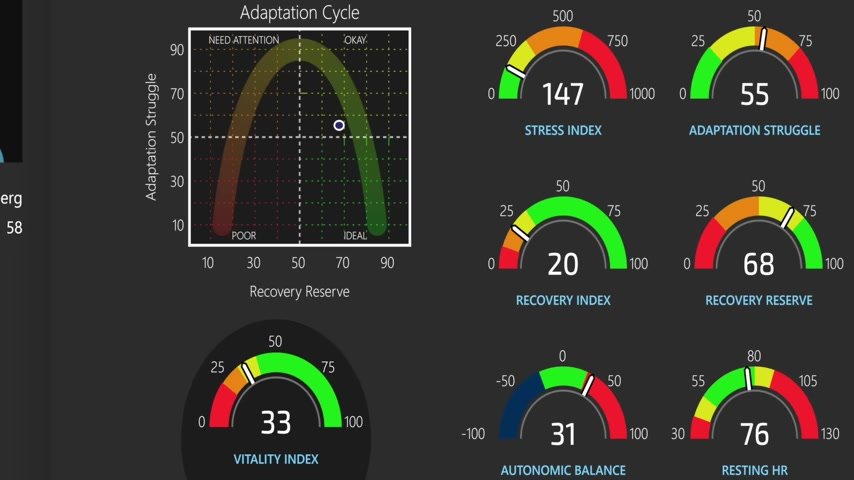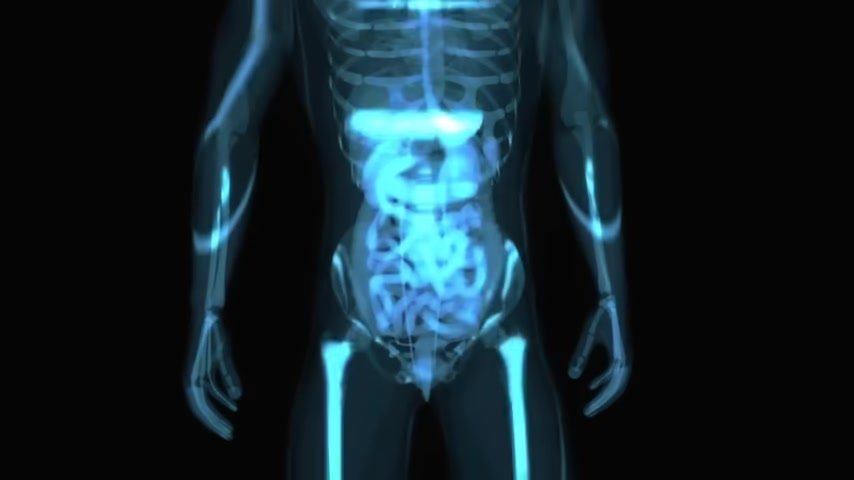Table of Contents
Discover the fascinating world of heart rate variability (HRV) and learn how this powerful metric can help you optimize your health, fitness, and overall well-being. Our comprehensive guide explores the science behind HRV, its practical applications, and actionable tips to help you harness its benefits for a healthier, more balanced life.
Heart rate variability (HRV) has emerged as a powerful tool for individuals seeking to optimize their health, fitness, and overall well-being. This fascinating metric provides valuable insights into the autonomic nervous system, offering a window into the complex interplay between stress, recovery, and adaptation within the body.
By understanding and leveraging HRV, you can gain a deeper understanding of your body’s responses to various stimuli and make informed decisions to support your health and performance goals.
In this comprehensive guide, we will delve into the science behind heart rate variability, explore its practical applications, and provide actionable tips to help you harness its benefits for a healthier, more balanced life. Whether you are an athlete looking to enhance your performance, a wellness enthusiast seeking to improve your overall health, or simply curious about the fascinating world of HRV, this article has something for everyone.
Heart rate variability explained
So today I want to introduce you to , maybe a new concept .
I don’t know if you’ve ever heard of this before .
It’s called heart rate variability , HRV .
What isHeart Rate Variability (HRV)?
HRV is like a measurement of the variations between the heartbeats .

So if you think about it , when your heart beats you have different distances between the beats .
And you would think you would want those all exactly the same , but the more varied the distances or timing between the heartbeats , the healthier the person is , the higher the HRV is .
And the more these distances or timing are the same , the lower the HRV , the less healthy the person is .
And I think a good concept to kind of wrap your wits around it is just your ability to adapt to your environment .
If you’re good at adapting to your environment , you’re gonna survive better .
If you run up a hill , for example , and you can adapt to that , you’re you’re gonna be very healthy .
But if you just barely stand up and you pass out because your body can’t adapt to that , you’re not gonna be in good shape .
So HRV , heart rate variability , is a technology that’s very researched and can help a person understand , where they are stress wise and their ability to adapt to stress , as well as their ability to recover from stress
And , a lot of people use this technology , in exercise to determine number 1 , should they work out hard today or should they take a day off ?
Are they overtraining or do they have enough potential recovery to handle a really good workout ?
Like , there’s a lot of lifestyle things that you can do .

Food , exercise , activity , sauna treatments , cold bath , nutritional supplements .
This technology allows you to have feedback to see if what you’re doing is benefiting you or making you better or not .
Summary
Your heart doesn’t beat evenly like a clock – the time between each beat varies a little bit. Having more variation in this timing, called high heart rate variability (HRV), is actually a good thing. It means your body can adapt well to challenges, like running up a hill without getting too tired.
Low HRV means your body struggles to handle stress and recover properly. By tracking your HRV with a device, you can see if your diet, exercise, sleep habits and other lifestyle factors are helping or hurting your body’s resiliency. Athletes use HRV to avoid overtraining when their scores drop too low.
What does an HRV device do?

You basically use this little device that you would put your finger in and it’ll pick up information of all of your heartbeat and put it into , some software which gives you these graphic illustrations of what’s going on with your stress and recovery , even your biological age .
So in practice , I’ve used this on patients all the time .
I depended on it .
It was a really great tool to kinda look what’s behind the scenes to see what’s happening .
And so I recently reached out to the company after probably 12 years of not using it , and they have come a very long way in refining this technology to simplify it , to make it easy as a do it yourself .
And , so , now this device and the software is available to anyone that wants to get it .
I’m gonna put the link down below .
When we’re done with the video if you wanna check it out .
But , the price is very reasonable .
You can check up to 6 people in your household .
There’s no monthly fees , and you pretty much can have your own science lab to figure things out because you really can’t take things to the next level , improve things if you can’t measure it .

So anything you have have to measure it , whether it’s a blood pressure cuff or a pulse rate or whatever , if you can measure it , then you have this feedback tool to see if what you’re doing is working or not .
Heart rate variability measures the autonomic nervous system right here .
The autonomic nervous system is the system that works on automatic that you don’t have to think about it .
It’s involuntary .
So this includes blood pressure , breathing , digestion .
Now , of course , you can control your breathing but then if you forget about it , you’ll still keep breathing
So there’s an involuntary component to this .
There’s 2 branches .
1 is the sympathetic which is the flood or fight , and the second 1 is the parasympathetic , which is the rest and digest .
We didn’t name it sympathetic and parasympathetic .
We named it stress index , which is your ability to adapt to stress , and then we named it recovery index , your ability to recover from stress .
So the simplicity of this is that HRV is the tool to measure the autonomic nervous system , which controls a lot as you can see right here .
Every tissue in the body is controlled by it .
And so this is a window to look inside your body to kind of see the state of where you are .
A lot of people are heavy on the stress or sympathetic mode or sympathetic dominance and they’re low in the recovery or the parasympathetic .
So , this kind of explains why they can’t sleep .
This is why they’re stressed .
But I create a lot of topics to understand this a lot more and how to use this and then what to do to improve these graphs .
And even if you don’t get this device , I’m gonna include the training videos down below so you can check them out because there’s a lot of great data that I put together .
I’m gonna give you 1 example .

Let’s say you go to sleep at night and you have a hard time going to sleep .
Well , the parasympathetic nervous system , the recovery system is always active and it’s pushing your pulse rate down .
And if that’s weak , okay , and then you’re also heavy on the sympathetic , the flight or flight , then you’re gonna have a hard time going to sleep .
So you’ll just lie there and your body won’t turn off .
So that parasympathetic is the system that pushes you into the deep delta wave non REM , phases of sleep where you’re rejuvenating and you’re recovering all the body functions .
So you’ll see when you take the graph , if you can sleep good then you’ll see that graph will correlate .
| Topic | Details |
|---|---|
| What is HRV? | Measures the variations in time between each heartbeat and the differences in the distances between heartbeats. A higher HRV means the body is better able to adapt to changes in the environment through the ANS. |
| Measuring device | Uses a small finger clip sensor to measure heartbeats and sends data to analysis software. |
| What it provides | Gives insights into stress levels and ability to adapt to stress (stress index) as well as ability to recover from stress (recovery index). Helps determine if lifestyle changes like food, exercise, supplements are improving these factors. |
| What it measures | Specifically measures the autonomic nervous system (ANS) which controls involuntary functions through the sympathetic (“fight or flight”) and parasympathetic (“rest and digest”) branches of the nervous system. The ANS regulates critical body systems. |
| Low HRV issues | Low parasympathetic activity combined with high sympathetic activity can cause issues like difficulty falling asleep or staying asleep due to the role of each branch in the sleep-wake cycle. |
| Detecting overtraining | By monitoring stress levels, it can show if a person is overtraining or needs more recovery time between workouts to avoid injury or illness. |
| Measuring biological age | Provides insights into cardiovascular health by assessing factors like artery elasticity and resilience. Lifestyle habits can negatively or positively impact this “biological age” measurement over time. |
| Improving HRV | Practices like controlled breathing exercises have been shown to significantly boost HRV measurements, indicating reduced stress on the body and better autonomic nervous system balance and function. |
If you don’t sleep good , that graph will not look very good .
And then the second half of the sleep is kinda controlled more by the sympathetic nervous system .
And this is why , kind of like the wavelength REM sleep is a very active wave similar to when you’re awake , but you’re actually asleep .
So if you have a problem with the sympathetic nervous system , you may find that you might not get that last bit of sleep , that REM sleep .
So then , if you’re trying to correct that , improve that , you’re gonna be scanning down all the potential things that could be stressing you out , and then you’ll chip away at that , and then you’ll retest back and forth to see if it improves , to really see if that was the thing that was causing most of this problem .
It’s also another great tool to help you , not over train .
I’ll give you an example .
When I train hard and I I sprint up like a mountain , right , and I’m just , like , pushing myself , and then I recheck my , my biological age the next day , I’m , like , 80 years old .
So that kinda tells me that I should probably take a day off , right , and just rest .
And then I’ll check on the next day and see when it comes down and comes down to the point where I’m safe to actually do that again .
Whereas , before , when I didn’t have this , technology , I would tend to push myself a little bit harder than I should and overtrain and wonder why I had more inflammation and had other issues .
And , 1 really cool thing about this is biological age

You’re able to look inside your body and see the age of your cardiovascular system and arteries .
You’re able to determine how elastic and how resilient they are .
You can also measure the rate of aging , which is a really cool graph too .
And , there’s a lot of things that can improve this graph and make it worse too .
Like , it’d be a really great experiment to have you go out drinking 1 night and then do a before and after of the graph .You’ll see big changes .
There’s also some training on just breathing exercises that you can dramatically improve your graph .
So I just wanted to introduce you on this technology , heart rate variability and exactly what it does , and it measures your autonomic nervous system .
Summary
There’s this cool device that measures your heart rate in a special way. By tracking the tiny time gaps between each heartbeat, it can tell if your body is stressed out or relaxed and recovering well. It gives you data on your overall fitness level, including things like your biological age compared to your real age. Using this device, along with doing some special breathing exercises, can help balance out your body’s natural “fight or flight” and “rest and digest” systems. This allows you to manage stress better, recover quicker from exercise, and see improvements in your sleep and health over time.
key Points
- HRV is a measurement of the variations between the heartbeats. There are different time distances between your heartbeats.
- The more varied the timing is between the heartbeats, the healthier a person is, and the higher the HRV is. The less varied the timing is, the less healthy the person is, and the lower the HRV is.
- HRV measures the autonomic nervous system. It has been well-researched and can help a person understand their ability to adapt to and recover from stress.
- Many people use this technology to determine whether or not their body can handle the stress of working out on a given day. Maybe they can handle doing high-intensity training one day, but their body would do better with a day off or with low-impact exercise the next.
- There are many different lifestyle changes you can make to help improve your overall health. HRV technology can help give you feedback to see if what you’re doing is actually benefiting you. It can even tell you your biological age and rate of aging.
- You really can’t take your health to the next level if you can’t measure it. This is a fantastic and easy-to-use tool to help you do that right at home.
DATA
https://www.ncbi.nlm.nih.gov/pmc/articles/PMC5624990
FAQ
What is a good HRV variability?
A good HRV (heart rate variability) is generally considered to be a high HRV, which indicates a healthy and adaptable autonomic nervous system. A high HRV means there is a greater variation in the time intervals between heartbeats, which is a sign of good cardiovascular health and fitness. Typical values for a good HRV can range from 40-100 milliseconds, with higher values being better.
How is HRV calculated?
HRV is calculated by measuring the time intervals between successive heartbeats, also known as the R-R intervals. These intervals are then analyzed using various mathematical methods to derive HRV metrics, such as the standard deviation of the R-R intervals (SDNN), the root mean square of successive differences (RMSSD), and the low-frequency to high-frequency power ratio (LF/HF). These metrics provide insights into the balance and activity of the sympathetic and parasympathetic branches of the autonomic nervous system.
What is the heart rate variability?
Heart rate variability (HRV) is a measure of the variation in the time intervals between successive heartbeats. It reflects the balance and activity of the autonomic nervous system, which controls involuntary bodily functions like heart rate, breathing, and digestion. A high HRV indicates a healthy and adaptable autonomic nervous system, while a low HRV can be a sign of various health issues.
What is a low HRV?
A low HRV, or low heart rate variability, is generally considered to be a value below 40 milliseconds. A low HRV can indicate an imbalance or dysfunction in the autonomic nervous system, which can be a sign of various health conditions, such as stress, anxiety, depression, cardiovascular disease, and metabolic disorders. A consistently low HRV may be a risk factor for these conditions and can be used as an early warning sign for potential health problems.
Heart rate variability chart by age
Heart rate variability (HRV) values can vary significantly based on age. Generally, HRV tends to decrease as we get older. Here’s a rough guide for heart rate variability by age:
- Ages 20-29: 50-100 ms
- Ages 30-39: 40-90 ms
- Ages 40-49: 35-80 ms
- Ages 50-59: 30-70 ms
- Ages 60-69: 25-60 ms
- Ages 70-79: 20-50 ms
It’s important to note that these are just general guidelines, and individual values can vary based on factors like fitness level, overall health, and lifestyle.
My HRV is very low
If your heart rate variability (HRV) is consistently very low, it may be a sign of an underlying health issue that needs to be addressed. Some common causes of a very low HRV include:
- Chronic stress or burnout
- Lack of physical activity or fitness
- Certain medical conditions like heart disease, diabetes, or metabolic disorders
- Excessive alcohol consumption or smoking
- Poor sleep quality
If your HRV is very low, it’s a good idea to consult with a healthcare professional, such as a cardiologist or a sports medicine specialist, to identify the underlying cause and develop a plan to improve your HRV and overall health.
Heart rate variability normal range
The normal range for heart rate variability (HRV) can vary depending on factors like age, fitness level, and overall health. However, as a general guideline, the following ranges are considered normal:
- Resting HRV (RMSSD): 20-100 ms
- Daytime HRV (RMSSD): 30-60 ms
- Nighttime HRV (RMSSD): 40-80 ms
It’s important to note that these are just general guidelines, and individual values can vary significantly. The best way to determine your normal HRV range is to track your HRV over time and establish your personal baseline.
What is a dangerously low HRV
A dangerously low heart rate variability (HRV) is generally considered to be a value below 20 milliseconds (ms). An HRV this low can be a sign of significant autonomic nervous system dysfunction and may indicate an increased risk of various health problems, including:
- Cardiovascular disease
- Diabetes and metabolic disorders
- Chronic stress and burnout
- Neurological conditions like depression and anxiety
- Increased risk of mortality
If your HRV consistently falls below 20 ms, it’s important to seek medical attention and work with a healthcare professional to identify the underlying cause and develop a plan to improve your HRV and overall health.
Heart rate variability chart female
Heart rate variability (HRV) can vary between genders, with women generally having a higher HRV than men. Here’s a rough guide for heart rate variability in females:
- Ages 20-29: 55-110 ms
- Ages 30-39: 45-100 ms
- Ages 40-49: 40-90 ms
- Ages 50-59: 35-80 ms
- Ages 60-69: 30-70 ms
- Ages 70-79: 25-60 ms
How to improve heart rate variability
Here are some effective strategies to help improve your heart rate variability (HRV):
- Engage in regular physical activity: Exercise, especially aerobic activities like running, cycling, or swimming, can significantly improve HRV.
- Practice stress management techniques: Activities like meditation, deep breathing, and yoga can help reduce stress and improve HRV.
- Improve sleep quality: Aim for 7-9 hours of quality sleep per night, as poor sleep can negatively impact HRV.
- Maintain a healthy diet: Eating a balanced, nutrient-rich diet can support overall cardiovascular health and HRV.
- Reduce alcohol and tobacco use: Excessive alcohol consumption and smoking can both have a negative impact on HRV.
- Monitor and manage any underlying health conditions: Conditions like heart disease, diabetes, and metabolic disorders can affect HRV, so it’s important to work with your healthcare provider to manage these.
High heart rate variability
A high heart rate variability (HRV) is generally considered a positive indicator of health and fitness. A high HRV means there is a greater variation in the time intervals between heartbeats, which is a sign of a healthy and adaptable autonomic nervous system.
Some key characteristics of a high HRV include:
- Increased parasympathetic (rest and digest) nervous system activity
- Better stress resilience and recovery
- Improved cardiovascular fitness and overall health
- Lower risk of various health conditions, such as heart disease, diabetes, and chronic stress
Typical values for a high HRV can range from 60-100 milliseconds or more, with higher values being better. Factors that can contribute to a high HRV include regular exercise, stress management, and overall good health and wellness.
What is HRV
Heart rate variability (HRV) is a measure of the variation in the time intervals between successive heartbeats. It reflects the balance and activity of the autonomic nervous system, which controls involuntary bodily functions like heart rate, breathing, and digestion.
HRV is considered a valuable indicator of overall health and fitness, as it provides insights into the body’s ability to adapt to various stressors and maintain homeostasis. A high HRV is generally associated with good cardiovascular health, stress resilience, and overall well-being, while a low HRV may be a sign of various health issues, such as heart disease, diabetes, and chronic stress.




